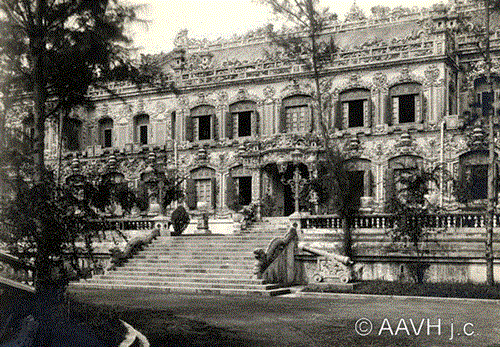September 10, 2018 | 16:15 (GMT+7)
Thua Thien-Hue: VND 123 billion for restoration of Kien Trung Palace
The central province of Thua Thien-Hue recently announced an investment of VND 123 billion (USD 5.28 million) for restoration of Kien Trung Palace inside the Nguyen dynasty’s imperial city.
As the first restoration project at the palace since it was destroyed in 1947 by the war, it will be implemented by the Hue Monuments Conservation Centre.
The project will cover consolidation of the building’s foundation; restoration of walls, floor, roof and interior decors; and building of some facilities like fire prevention and fighting system and anti-lightning equipment.
    |
 |
|
Kien Trung Palace in 1930. Photo: Aavh.org |
In the imperial city, Kien Trung Palace stood behind the Thai Hoa (Supreme Harmony) Palace, which served as the main meeting hall for kings and their mandarins.
The palace was the home of the dynasty’s last kings, Khai Dinh and Bao Dai.
The palace was built in a mixture of French, Italian Renaissance and old Vietnamese architectural styles by King Khai Dinh in 1923. Earlier at the site, there was a pavilion built by King Minh Mang and later repaired by King Tu Duc and King Duy Tan.
King Khai Dinh drew his last breath at the palace in 1925. His son, King Bao Dai, lived in it with his first queen Nam Phuong. Five of their children were born there, including two princes and three princesses.
In March 1945, King Bao Dai met the Japanese ambassador at the palace to announce Vietnam’s independence from French colonialism.
Source: VNA